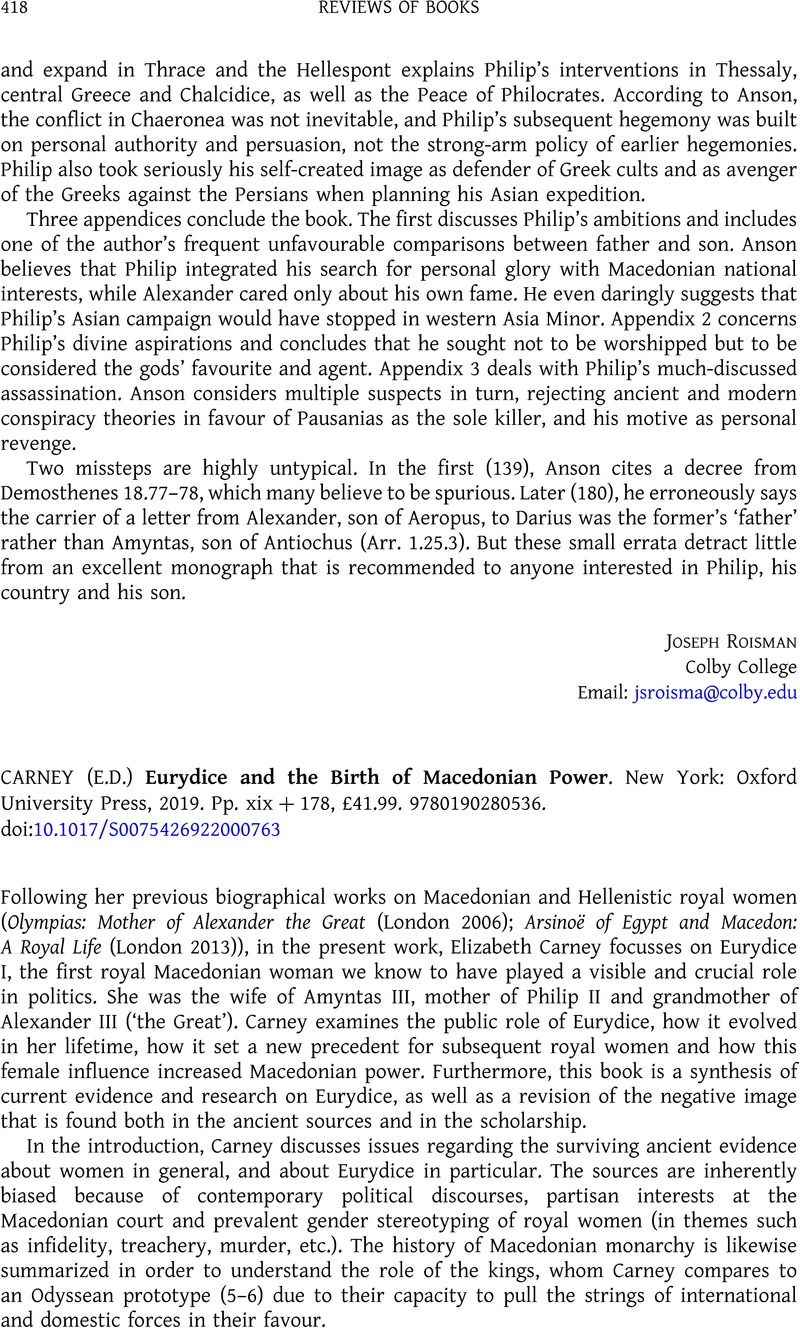No CrossRef data available.
Article contents
(E.D.) CARNEY Eurydice and the Birth of Macedonian Power. New York: Oxford University Press, 2019. Pp. xix + 178, £41.99. 9780190280536.
Review products
(E.D.) CARNEY Eurydice and the Birth of Macedonian Power. New York: Oxford University Press, 2019. Pp. xix + 178, £41.99. 9780190280536.
Published online by Cambridge University Press: 11 April 2023
Abstract
An abstract is not available for this content so a preview has been provided. Please use the Get access link above for information on how to access this content.

- Type
- Reviews of Books: History
- Information
- Copyright
- © The Author(s), 2023. Published by Cambridge University Press on behalf of the Society for the Promotion of Hellenic Studies




